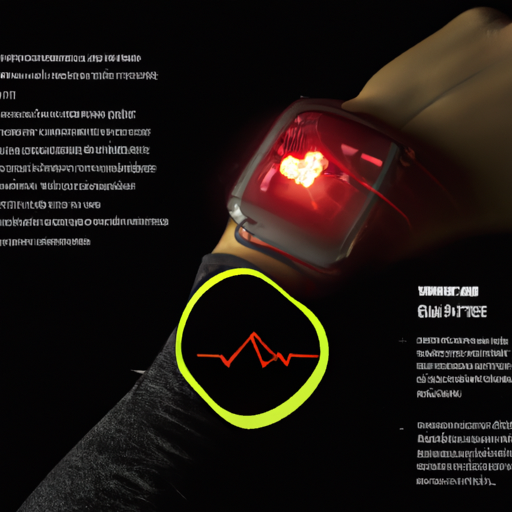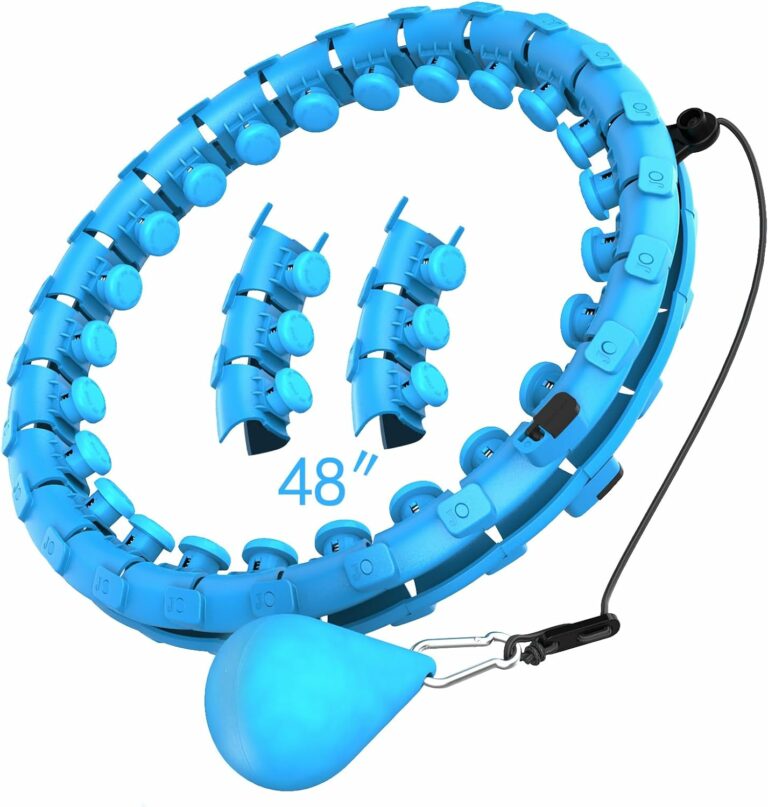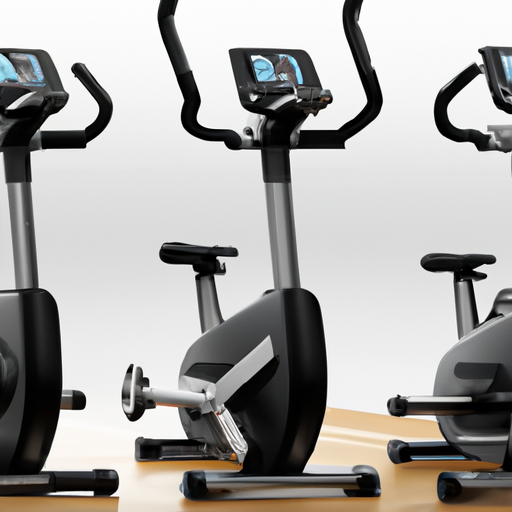Imagine a future where your health is constantly monitored, allowing you to stay in touch with your body like never before. Thanks to advancements in technology, wearable electrocardiogram (ECG) and heart rate monitors are set to revolutionize the way we track and manage our health. These compact devices can be worn on your wrist or attached to your chest, providing real-time insights into your heart’s performance and overall well-being. With the ability to detect anomalies and irregularities, these monitors have the potential to prevent serious health issues and empower individuals to take proactive steps towards a healthier lifestyle. Say goodbye to guesswork and hello to personalized health monitoring at your fingertips.
Benefits of Wearable ECG and Heart Rate Monitors
Wearable ECG and heart rate monitors offer a range of benefits that can greatly improve our understanding of our cardiovascular health. One of the key advantages is real-time monitoring. With a wearable device, you have the ability to continuously track your heart rate and electrocardiogram (ECG) data throughout the day. This provides valuable insights into how your heart is functioning during various activities and can prompt you to take immediate action if any irregularities are detected.
Another significant benefit is the early detection of heart conditions. By wearing an ECG and heart rate monitor, you have the potential to identify and address cardiac issues before they become more serious. For example, abnormal heart rhythms or arrhythmias can be detected early on, allowing for timely intervention and treatment. This can be particularly significant for individuals who are at a higher risk of developing heart diseases, such as those with a family history or certain health conditions.
Convenience and accessibility are also major advantages of wearable ECG and heart rate monitors. These devices are portable and can be easily worn on the wrist, making them highly convenient for everyday monitoring. Furthermore, they integrate with smartphones and other devices, allowing for seamless data transmission and analysis. With the increasing popularity of wearable technology, these devices have become more accessible and affordable, making them a viable option for a wide range of individuals.
Advancements in Wearable ECG and Heart Rate Monitors
Over the years, there have been significant advancements in the field of wearable ECG and heart rate monitors. One notable advancement is the miniaturization of sensors. The size of these sensors has reduced dramatically, allowing for more comfortable and less intrusive wearable devices. Smaller sensors also promote better adherence, as individuals are more likely to wear a device that is lightweight and unobtrusive.
Improved accuracy and reliability are also key advancements in wearable ECG and heart rate monitors. Manufacturers have invested in research and development to enhance the accuracy of these devices, ensuring that the data collected is reliable and representative of the user’s cardiovascular health. This improvement in accuracy has increased their overall effectiveness as tools for monitoring heart conditions and detecting abnormalities.
Integration with smartphones and other devices is another significant advancement in wearable ECG and heart rate monitors. Many devices now have the capability to sync with smartphones, allowing for seamless data transfer and analysis. This integration enables users to easily access their heart rate and ECG data, track trends over time, and share information with healthcare professionals when necessary. This level of connectivity empowers individuals to take a proactive approach to their cardiovascular health and facilitates better communication between patients and healthcare providers.
Applications of Wearable ECG and Heart Rate Monitors
Wearable ECG and heart rate monitors have a wide range of applications, making them versatile tools in healthcare. One of the most prominent applications is fitness and exercise tracking. These devices are popular among athletes and fitness enthusiasts who want to monitor their heart rate and exertion levels during workouts. By tracking heart rate during exercise, individuals can optimize their training and ensure they are working within their target heart rate zone for maximum results.
Another important application of wearable ECG and heart rate monitors is heart disease management. Individuals with heart conditions can benefit greatly from continuous monitoring of their heart rate and ECG data. These devices can help detect any changes or abnormalities in heart rhythm, allowing for timely intervention and management of heart disease. By closely monitoring their heart health, individuals can work with their healthcare providers to make informed decisions regarding medication adjustments, lifestyle changes, and other necessary interventions.
Stress and anxiety management is another area where wearable ECG and heart rate monitors find utility. Chronic stress and anxiety can have a negative impact on cardiovascular health. By monitoring heart rate and ECG data during periods of stress, individuals can gain insights into how these factors affect their heart health. Armed with this information, individuals can identify triggers, learn coping mechanisms, and take steps to reduce stress levels, ultimately promoting better heart health.
Challenges and Limitations
While wearable ECG and heart rate monitors offer numerous benefits, there are also a few challenges and limitations to consider. One of the main concerns is data privacy and security. As these devices collect sensitive health information, there is a risk of this data being compromised or accessed by unauthorized individuals. Manufacturers and developers need to prioritize robust security measures to protect user data and ensure compliance with data protection regulations.
Accuracy and reliability are also critical factors to consider. While advancements have been made in this area, there can still be discrepancies between the data collected by wearable devices and traditional clinical methods. Factors such as motion artifacts, inadequate sensor placement, and individual variation can affect the accuracy and reliability of the data collected. Manufacturers need to continue improving the technology to address these limitations and ensure that users can rely on the information provided by these devices.
User acceptability and adoption are additional challenges that must be addressed. Not all individuals may be comfortable wearing a device on their wrist or may find the continuous monitoring intrusive. In order for wearable ECG and heart rate monitors to be effective, they need to be widely accepted and adopted by the general population. Manufacturers should focus on designing devices that are user-friendly, aesthetically pleasing, and comfortable to wear in order to increase their acceptability and encourage widespread adoption.
Future Trends
The future of wearable ECG and heart rate monitors looks promising, with several exciting trends on the horizon. One of these trends is continuous monitoring of other vital signs. While heart rate and ECG data provide valuable insights into cardiovascular health, monitoring other vital signs such as blood pressure, temperature, and oxygen saturation can provide a more comprehensive picture. Integrating these measurements into wearable devices will allow for a more holistic approach to health monitoring and enable individuals to monitor multiple aspects of their well-being.
Artificial intelligence (AI) and machine learning integration represent another significant trend in the field. With the increasing sophistication of AI algorithms, wearable devices can analyze data in real-time and provide personalized recommendations and insights. Machine learning models can track trends, identify patterns, and alert users to any abnormal changes in their cardiovascular health. This integration of AI and machine learning will further enhance the accuracy and effectiveness of wearable ECG and heart rate monitors.
Remote patient monitoring is a trend that holds great potential for improving healthcare outcomes. By enabling healthcare providers to remotely monitor their patients’ cardiovascular health, wearable ECG and heart rate monitors can facilitate early detection of abnormalities and timely intervention. This can be particularly valuable for individuals in rural or underserved areas who may have limited access to healthcare resources. Remote patient monitoring can also help reduce the burden on healthcare systems, as early intervention can prevent the progression of cardiac conditions and reduce the need for hospitalizations.
Impacts on Healthcare
The adoption of wearable ECG and heart rate monitors has the potential to revolutionize healthcare in several ways. One of the most significant impacts is early diagnosis and intervention. By continuously monitoring heart rate and ECG data, individuals have the opportunity to detect cardiac abnormalities at an early stage. Early intervention can be critical in preventing further damage to the heart and improving patient outcomes. Timely detection of conditions such as arrhythmias, myocardial infarction, and heart failure can lead to prompt treatment and better prognosis.
Wearable ECG and heart rate monitors also have the potential to reduce healthcare costs. By enabling individuals to monitor their cardiovascular health at home, these devices can help prevent unnecessary visits to healthcare facilities. Early detection of abnormalities can lead to more efficient use of healthcare resources, reducing the need for emergency room visits and hospitalizations. This can result in significant cost savings for both individuals and healthcare systems.
One of the ultimate goals of healthcare is to improve patient outcomes, and wearable ECG and heart rate monitors play a key role in achieving this. By empowering individuals to take an active role in monitoring and managing their cardiovascular health, these devices promote patient engagement and self-care. With access to real-time data and personalized insights, individuals can make informed decisions about their health and work collaboratively with healthcare providers to develop effective treatment plans.
Regulatory and Legal Considerations
As with any medical device, wearable ECG and heart rate monitors are subject to regulatory and legal considerations. In the United States, the Food and Drug Administration (FDA) regulates medical devices, including wearable health monitoring devices. Manufacturers must comply with FDA regulations to ensure the safety and effectiveness of their devices. This involves conducting clinical trials, obtaining approval or clearance for marketing, and adhering to quality control standards.
Protection of patient data is another crucial consideration. Wearable ECG and heart rate monitors collect sensitive health information, and it is essential to ensure that this data is securely stored and transmitted. Manufacturers and developers must implement robust security measures to protect against data breaches and unauthorized access. Compliance with data protection regulations, such as the Health Insurance Portability and Accountability Act (HIPAA) in the United States, is of utmost importance to maintain patient trust and privacy.
Liability issues also need to be considered when it comes to wearable ECG and heart rate monitors. If a device malfunctions or provides inaccurate information that leads to harm or delayed treatment, there may be legal implications for the manufacturer or healthcare provider. Clear guidelines and protocols should be established to outline the responsibilities and liabilities of all parties involved in the use of these devices. Transparency and comprehensive documentation are crucial in mitigating potential legal risks.
Potential Risks and Ethical Dilemmas
While wearable ECG and heart rate monitors offer numerous benefits, they also come with potential risks and ethical dilemmas. One such risk is the possibility of false alarms and unnecessary interventions. False readings or inaccurate data could lead individuals to seek unnecessary medical attention, causing anxiety and burdening healthcare systems. Manufacturers should focus on improving the accuracy of these devices to minimize the occurrence of false alarms and optimize the user experience.
Another ethical dilemma revolves around the invasion of privacy and surveillance. As wearable ECG and heart rate monitors continuously collect data, there is a concern that this information could be used for surveillance purposes or to discriminate against individuals based on their health status. Clear guidelines and regulations need to be in place to protect individuals’ privacy rights and ensure that their health data is used solely for medical purposes.
Unequal access to wearable ECG and heart rate monitors is also a potential ethical concern. As these devices become more advanced and sophisticated, they may become expensive and inaccessible to certain segments of the population. To avoid exacerbating healthcare disparities, efforts should be made to make these devices affordable and accessible to all individuals, regardless of socioeconomic status. Collaboration between manufacturers, healthcare providers, and policymakers is essential to ensure equitable access to these technologies.
Industry Players and Market Trends
The market for wearable ECG and heart rate monitors is rapidly growing, with several key manufacturers and developers driving innovation. Companies such as Apple, Fitbit, Samsung, and Garmin have established themselves as leaders in this field, offering a range of wearable devices with advanced health monitoring capabilities. These companies invest heavily in research and development to improve the accuracy, reliability, and functionality of their devices, catering to the evolving needs and preferences of consumers.
The market for wearable ECG and heart rate monitors is highly competitive, with new players entering the field regularly. This competition fosters innovation and drives down costs, making these devices more accessible to a wider audience. Market growth is fueled by the increasing awareness of cardiovascular health and the growing demand for preventive and personalized healthcare solutions. As technology continues to evolve, we can expect to see further advancements in wearable ECG and heart rate monitors, expanding their capabilities and reaching new heights.
Investment and funding in the wearable health monitoring market are also on the rise. Venture capital firms and healthcare-focused investors recognize the potential of these technologies and are actively supporting the development and commercialization of wearable ECG and heart rate monitors. This financial backing enables manufacturers and developers to accelerate their research and development efforts, bring innovations to market faster, and reach more individuals who can benefit from these devices.
Conclusion
Wearable ECG and heart rate monitors have the potential to transform the way we monitor and manage our cardiovascular health. The benefits of real-time monitoring, early detection of heart conditions, and convenience and accessibility make these devices highly valuable in healthcare. Advancements in miniaturization, accuracy, and integration with smartphones further enhance their effectiveness and user experience.
Applications in fitness and exercise tracking, heart disease management, and stress and anxiety management demonstrate the versatility of wearable ECG and heart rate monitors. Challenges and limitations, such as data privacy concerns and accuracy issues, need to be addressed to ensure the widespread adoption and acceptance of these devices.
Future trends, including continuous monitoring of vital signs, AI and machine learning integration, and remote patient monitoring, hold great promise for the field. The impacts on healthcare are significant, ranging from early diagnosis and intervention to reduced healthcare costs and improved patient outcomes. Regulatory and legal considerations, as well as potential risks and ethical dilemmas, require careful attention to ensure the responsible use and deployment of these devices.
With key industry players actively driving innovation and market growth, the wearable ECG and heart rate monitor market is set for continued expansion. Investment and funding further support the development and commercialization of these devices, bringing us closer to a future of personalized and proactive healthcare. Continuous innovation, accompanied by robust regulation, will be the key to unlocking the full potential of wearable ECG and heart rate monitors in transforming healthcare for the better.



